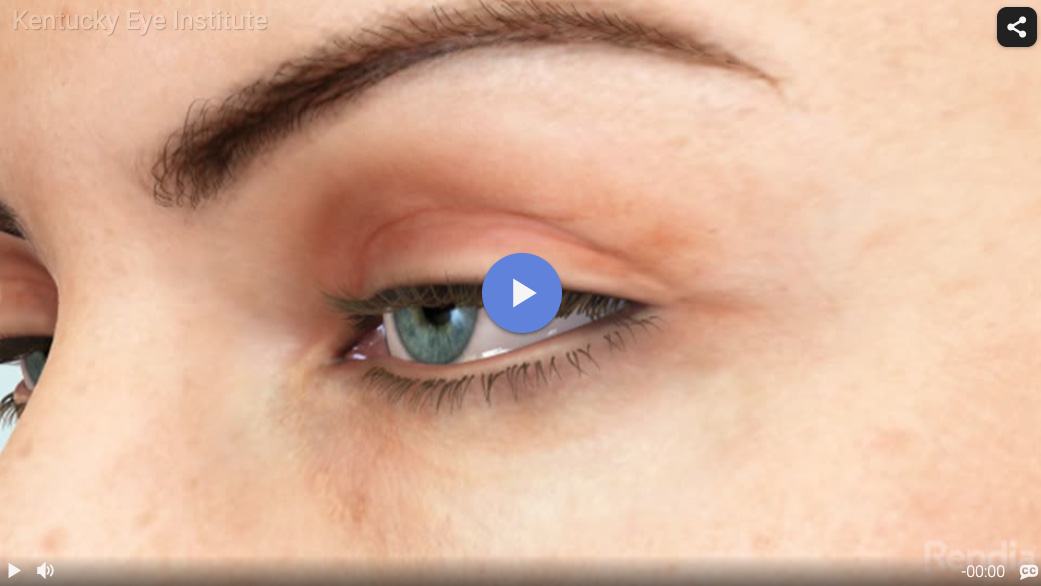Oculoplastic surgery is a specialized field of ophthalmology that focuses on the structures surrounding the eye and portions of the face. These delicate procedures aim to improve both the function and appearance of the eye area while also maintaining or enhancing vision.
Oculoplastic procedures are often performed to address medical necessities that affect eye health and visual function. Many patients seek oculoplastic surgery to correct problems that interfere with comfortable vision or to restore normal appearance after trauma, disease, or aging changes.
However, sometimes oculoplastic surgery is performed strictly for cosmetic reasons. At Kentucky Eye Institute, our oculoplastic surgeons combine their knowledge of eye health with plastic surgery techniques to deliver comprehensive care.
This unique blend of expertise ensures that aesthetic improvements work in harmony with proper eye function, offering solutions that both look natural and support optimal vision.
 Request an Appointment
Request an AppointmentAt Kentucky Eye Institute, our surgeons perform a variety of procedures aimed at improving the look or function of the eyes or the areas around the eyes. Some of the most common procedures we offer are:
Blepharoplasty, commonly known as eyelid surgery, addresses excess skin and tissue around the eyes that can create a tired appearance or, more seriously, interfere with vision. Upper blepharoplasty focuses on removing extra skin from the upper eyelids that may hang over the eyelashes and affect peripheral vision.
Lower blepharoplasty can correct under-eye bags and puffiness that can make you look tired. At Kentucky Eye Institute, our surgeons perform blepharoplasty with careful attention to both function and aesthetics.
The procedure typically takes 1-2 hours and can be performed under local anesthesia. Most patients experience minimal discomfort and can return to light activities within a few days, with full recovery occurring over several weeks.
Many insurance plans cover upper blepharoplasty when there is documented vision impairment, while lower blepharoplasty is generally considered cosmetic. Our team can help determine your eligibility for insurance coverage during your consultation.
Ptosis is the medical term for drooping of the upper eyelid. This condition may be present from birth, which is called congenital ptosis, or develop later in life due to aging or injury, for example.
When severe, ptosis can significantly obstruct vision and force patients to tilt their heads back or raise their eyebrows constantly to see clearly. Ptosis correction surgery involves tightening the muscle that is responsible for lifting the eyelid to restore its proper position.
Our surgeons at Kentucky Eye Institute carefully evaluate the degree of ptosis and the strength of the eyelid muscles to determine the most appropriate technique. The procedure typically takes about an hour per eyelid and can dramatically improve both appearance and vision in some cases.
Recovery is similar to blepharoplasty, with most patients resuming normal activities within a week. When performed to correct visual impairment, ptosis repair is often covered by medical insurance.
Browpexy, sometimes called a brow lift, addresses sagging eyebrows that contribute to a tired, aged appearance and may compound the effects of drooping eyelids. As you age, the tissues supporting your eyebrows weaken, allowing gravity to pull the eyebrows downward.
This can create hooding over the eyes and make the upper eyelids appear fuller. At Kentucky Eye Institute, our surgeons may recommend browpexy either as a standalone procedure or in combination with blepharoplasty, depending on your goals.
The procedure involves making small incisions, often hidden in the hairline or natural skin creases, through which the surgeon can lift and secure the brow tissues in a higher position. Most patients can return to regular activities within 1-2 weeks, with final results appearing as swelling subsides over the following months.
Entropion and ectropion are conditions affecting the position of the eyelid margin. Entropion occurs when the eyelid turns inward, causing the lashes and skin to rub against the eye surface. Ectropion is the outward turning of the eyelid, exposing the inner lid surface.
Ectropion can prevent proper tear distribution, which leads to dry eye symptoms and excessive tearing. Entropion can cause irritation, redness, and potential corneal damage.
At Kentucky Eye Institute, our oculoplastic surgeons offer specialized procedures to reposition the eyelid to its natural orientation, relieving symptoms and protecting ocular health. These surgeries typically take less than an hour per eyelid under local anesthesia.
Recovery is generally straightforward, with most patients experiencing significant symptom relief almost immediately after surgery. Since these procedures address medical conditions that threaten eye health, they are typically covered by insurance.

Determining whether you might benefit from an oculoplastic procedure begins with recognizing certain symptoms or concerns. You may be a candidate if you experience:
The ideal candidate for oculoplastic surgery is in good general health with realistic expectations about what these procedures can achieve. Many patients are surprised to learn that what they assumed was just a cosmetic concern may actually qualify as a medical necessity eligible for insurance coverage.
At Kentucky Eye Institute, we begin with a comprehensive evaluation to assess your eye health, facial structure, and specific concerns. Our oculoplastic surgeons take time to understand your goals and explain which procedures might best address your unique situation.
Request an Appointment